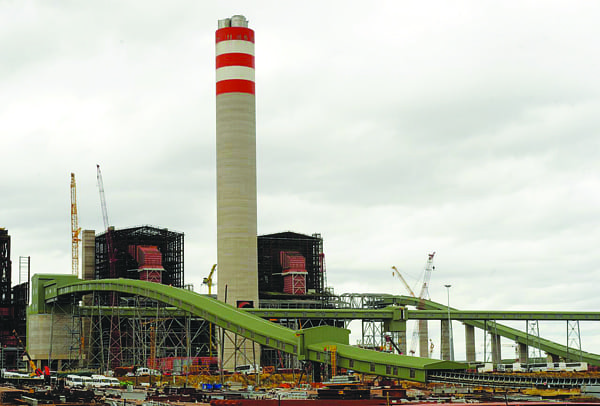Funding for Coal Plants Overseas Curbed on Climate Concerns
In his climate change speech earlier this summer, President Obama announced a major policy shift: The U.S. government will end financing for virtually all new coal power plants oversees. In the wake of that policy pivot, the U.S. Export-Import Bank has dropped plans to fund a 1.2-GW coal plant in Vietnam, the World Bank adopted a new energy strategy that would restrict financing of coal plants, and the European Investment Bank (EIB) said it would screen out investments whose carbon emissions exceed its threshold.
In his June 25 speech at Georgetown University, President Obama outlined a number of executive actions to combat and prepare for climate change, including a directive to the Environmental Protection Agency to complete issuance of a final rule to limit greenhouse gas emissions at new power plants and to draft another rule for existing power plants. The president also prominently lauded increased U.S. production of natural gas and renewable power in lieu of carbon-heavy coal power. Then he added: “Today, I’m calling for an end to public financing for new coal plants overseas unless they deploy carbon-capture technologies, or there’s no other viable way for the poorest countries to generate electricity.”
In mid-July, in the first such decision since the speech, the government-backed Ex-Im Bank voted to stop consideration of financing for a plant in Vietnam, rejecting loans to the Thai Binh II coal-fired power plant. That decision sets a precedent for the independent self-sustaining agency that has provided financing for a handful of colossal coal plants, including $805 million in 2010 for Eskom’s 4.8-GW Kusile Power Plant in South Africa and $917 million in 2011 for Reliance Power’s 4-GW Sasan plant in India. In both instances, the agency said it was creating “opportunities” for U.S. companies in developing areas of the world.

Even before the president’s speech, the World Bank was reportedly considering a discussion draft of a new energy strategy, and in mid-July, despite previous proposals to restrict coal financing in emerging markets like China and Brazil, the Washington-based bank’s board agreed to limit financing of coal-fired power plants in “rare circumstances,” and only to countries that have “no feasible alternatives” to coal. Meanwhile, the World Bank reversed a 1990s decision to abandon support for mega-dam projects for their potential to displace communities, voting instead to increase support for hydropower.
Experts noted that the World Bank’s new strategy remains untested, however. The international financial institution committed to the reduction of poverty last approved funding in 2010 for another massive coal-fired plant under construction—the 4.8-GW Medupi power plant (Figure 1) in the northern Limpopo region of South Africa—despite environmental concerns voiced by the U.S., the Netherlands, and the UK. But now the bank must decide whether to provide loan guarantees to the 600-MW lignite-fired Kosovo Power Project, a power source that the World Bank itself has admitted could boost prosperity in the war-torn region. The Eastern European state remains one of the poorest countries in Europe, the bank acknowledges, noting that nearly a third of Kosovo’s people live on less than $1.61 per day. Meanwhile, the bank says, “businesses regard the unreliable electricity supply as a major obstacle to their operations and a constraint to investment and business expansion.”
Barely a week after the World Bank’s decision, the EIB, Europe’s leading development bank, announced it would introduce a new emissions performance standard and fund only energy projects whose carbon emissions fall below that threshold. The standards mean that new coal- and gas-fired plants eligible for funding could emit no more than 550 grams of carbon dioxide per kilowatt-hour (gCO2/kWh).
For comparison, the International Energy Agency estimated in 2011 that the emissions intensity of conventional coal-fired power plants is 830 gCO2/kWh; for ultrasupercritical plants with pulverized coal combustion, it is 770 gCO2/kWh; and for combined heat and power plants co-fired with biomass, it is 550 gCO2/kWh. The threshold reflects “existing [European Union (EU)] and national commitments to limit carbon emissions,” the EIB said.
The announcements have been lauded by environmentalists, who have fervently criticized the international aid organizations for providing billions to finance plants they say counter efforts to curb climate change. Yet, a number of development experts argue the measures create a direct conflict between development aims and climate aims. According to Todd Moss, vice president for programs and a senior fellow at the Center for Global Development, electricity is one of the top constraints on business growth. An emissions cap could “effectively deny access to basic electricity for the world’s most vulnerable while making no meaningful dent in global emissions,” he says. “It also smacks of hypocrisy to impose caps on say, Ethiopia (which emits less than 1% of the per capita emissions of the United States) or Nigeria (less than 4%), when we have no such caps on ourselves. This is, simply put, no way to fight climate change.”